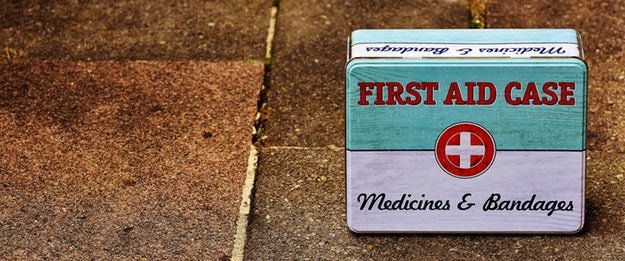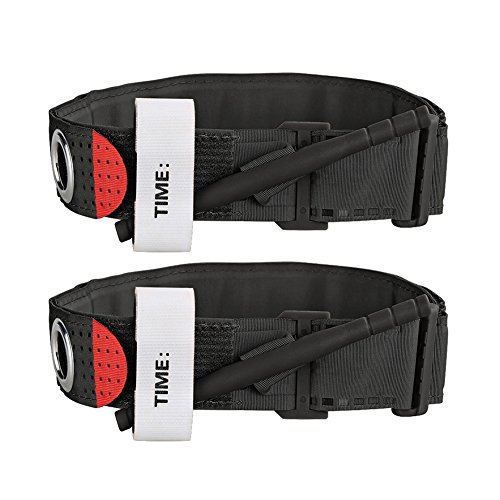The article Building A Bug Out Bag is available on http://www.totalsurvival.net/
A 72-hour bug out bag or “Go Bag” isn’t just for end-of-the-world scenarios. A bug out bag is handy to have around in case of other emergencies such as power outages, car breakdowns, natural disasters, and other instances where you might be without services for a few days.
A Better Bug Out Bag For Greater Chances Of Survival
If you live in an area prone to hurricanes, wildfires, or ice storms, this type of bag will help keep you and your family safe at home or during an evacuation. If you keep the most necessary items in one central place (the bug out bag), it will be easier to get your hands on them when you need them.
A Brief History
What is a bug out bag? “Bug out” is British military slang for “leaving quickly under fire.” The origin of a bug out bag is with the military—a survival kit for use when you need to exit an area quickly. Aviators during World War II had bug out bags or “bail out bags” to take with them when skydiving out over enemy territory.
Bug Out Bag Or Survival Kit
A bug out bag is different than a survival kit in that it is meant to give you the items you need for the first 72 hours of survival. Bug out bags are more focused on lightweight, emergency, and short-term supplies as opposed to long-term solutions. Choosing a military style bag or backpack has become a very popular choice due to its durability. But it may not be the best option…
Choosing A Bug Out Bag
You’ll want the bag to blend in with its surroundings. If you have to travel through an urban area, a blue or black nylon backpack is a good choice. For traveling through the wilderness, a camouflage pattern is ideal. The key is for the bag to not stick out like a sore thumb. As a side note, your bug out bag doesn’t have to be an actual “bag.” It can be a Rubbermaid container or another type of box that fits in your trunk. It could even be a large purse. The size and type of bug out container depends on whether you will need to be carrying it and walking (in which case a backpack is a better choice) or if you can drive to your alternate location.
Bug Out Bags For The Family
If you have more than one person to pack a bug out bag for, consider packing a smaller bag for each member of the family so that everyone has his or her supplies. This will also help you organize your supplies.
Bug Out Bag For Your Vehicle
Transportation is something that could occupy an entire article in and of itself, but there are a few brief considerations to think about regarding vehicles when planning for bugging out:
- If possible, try to acquire and maintain a vehicle manufactured before 1981. These vehicles have fewer electronics that are likely to be affected in the event of an EMP attack.
- A diesel engine is preferable.
- It should have enough room for the people and cargo you need to transport when “bugging out.”
At your safe location, it’s a good idea to have a bicycle and cart for transportation that doesn’t require fuel.
There are 3 rules that one has to remember when building a bug out bag. Let's start with the first one…
Rule 1: The Right Supplies

Your bug out bag is only as good as the supplies you put in it and the skills you have to use them…Here are a few suggestions for stocking your 72-hour bug out bag. But take this with a grain of salt… you need to customize this kit for your area, your needs, and your family. Here's a list of the supplies that you can put in your bug out bag:
First Aid Supplies
- Adhesive bandages
- Ace bandages
- Rubbing alcohol
- Hydrogen peroxide
- Gauze pads
- Tourniquet
- Aspirin & Ibuprofen
- Tweezers
- Scissors
- Bug spray
- Sunscreen
- 30 days of prescription medications
- Antibacterial ointment
- Pepto Bismol
Clothing (per person)
- Three pairs of wool socks
- Three pairs of underwear
- Two pairs of pants
- Two t-shirts
- One long-sleeved undershirt
- Jacket
- long underwear (thermals)
- something a little more risque?
Food and Water
- Water bottles Water (two liters per person)
- Electrolyte tabs or salt
- Iodine tabs and cheesecloth Protein and nut bars Dehydrated fruits and meats MREs
Tools
- Compass (practice so that you know how to use it before you need it)
- Local maps
- Small tool kit (screwdriver, pliers etc)
- Hatchet
- Collapsible shovel
- Knife
- Knife sharpener
- Flashlight
- Extra batteries
- Small pan for heating water
Shelter
- Tent or tarp
- Rope (to hang the tarp)
- Foam pad (to prevent hypothermia)
- Space blanket or emergency blanket (one per person)
- Sleeping bag
Miscellaneous
- Toothbrush
- Toothpaste
- Dental floss
- Ziploc bags
- Trash bags
- Duct tape
| Preview | Product | Rating | Price | |
|---|---|---|---|---|
 |
Band-Aid Brand Of First Aid Products Mirasorb Gauze Sponges For Cleaning Wounds, 4 Inches By 4... | 155 Reviews | $5.97 | Buy on Amazon |
Rule 2: The Plan

Something almost nobody thinks to include in a bug out bag is a written plan. When disaster strikes, you’ll be distracted. The plan should include:
- A list of what to take
- Directions for getting to the alternate location
- An alternate meeting place, should that be necessary
- It’s possible that you could be injured or incapacitated and somebody else in your family or group will have to lead the group to safety.
In the event of a catastrophic failure of all systems, if you’ve written out your plan, you’ll be better able to safely and confidently get from point A to point B without forgetting anything.
No products found.
Rule 3: The Execution
Make sure that you’ve practiced using the items in your bug out bag. A compass is useless if you don’t know how to use it—and using one is harder than it looks! Practice starting a fire without matches. Check your food and medical items in your bag to make sure they have not expired and rotate them out as needed (practice FIFO- First in First Out). Otherwise, leave the bag alone.
| Preview | Product | Rating | Price | |
|---|---|---|---|---|
 |
6" Elastic Bandages with Clips (Pack of 10), MCR Medical | 59 Reviews | $19.95 | Buy on Amazon |
A Word On Premade Kits…
You can buy premade bug out bags that come with supplies. But keep in mind it may not have the items that you want or need, so your best bet is to build your own from scratch. Or use the premade kit as a springboard to create your personalized “ultimate” bug out bag.
| Preview | Product | Rating | Price | |
|---|---|---|---|---|
 |
Amagoing Tactical Emergency Tourniquet Outdoors Spinning Military Tourniquet One-handed Tourniquet... | 37 Reviews | $17.55 | Buy on Amazon |
Watch this video posted by SensiblePrepper on a DIY Walmart Premium Bug Out Bag:
Do not “borrow” items from the bag for non-emergency situations. If you do, you might forget to put the items back, and in the case of an emergency, you’ll be stuck without something vital that you need. While a bug out bag won’t prepare you for every scenario, it will help you get to the place where you have prepared for every eventuality.
| Preview | Product | Rating | Price | |
|---|---|---|---|---|
 |
Coleman North Rim Adult Mummy Sleeping Bag | 1092 Reviews | $46.98 | Buy on Amazon |
What do you put in YOUR bug out bag? Have something “weird” or uncommon? Leave a comment below and let us know.
This Article Was First Found at survivallife.com Read The Original Article HereOriginal Post Here: Building A Bug Out Bag
No comments:
Post a Comment